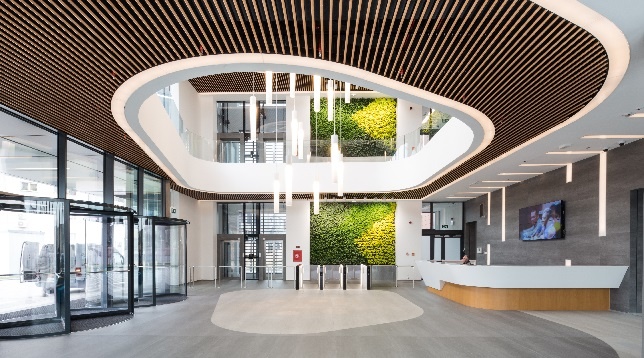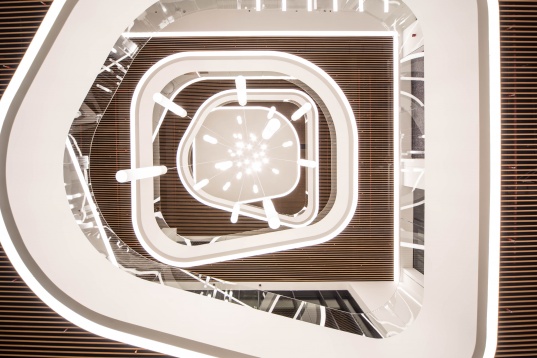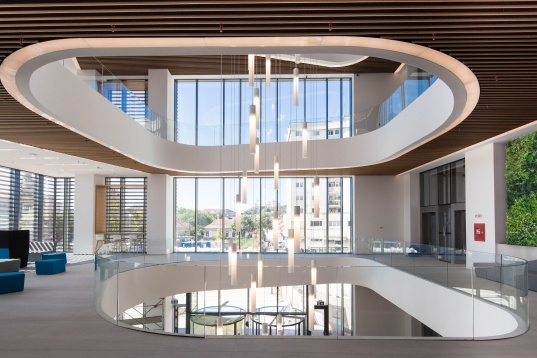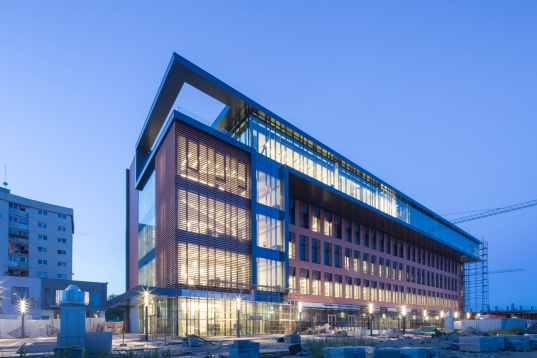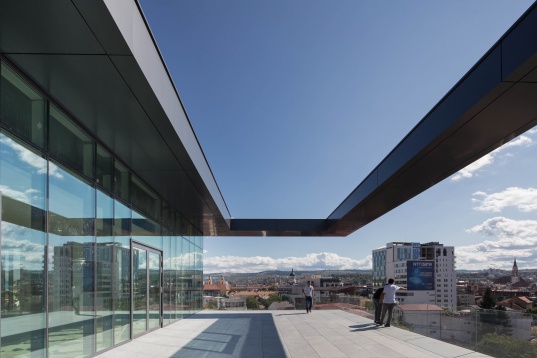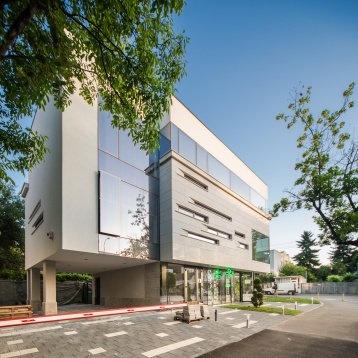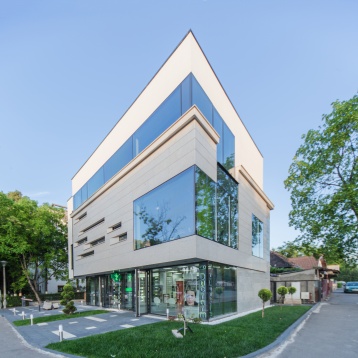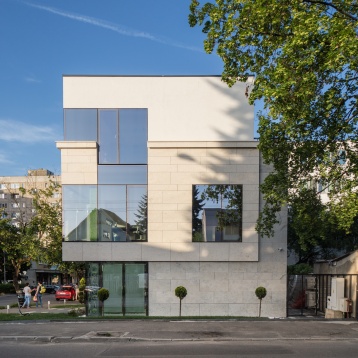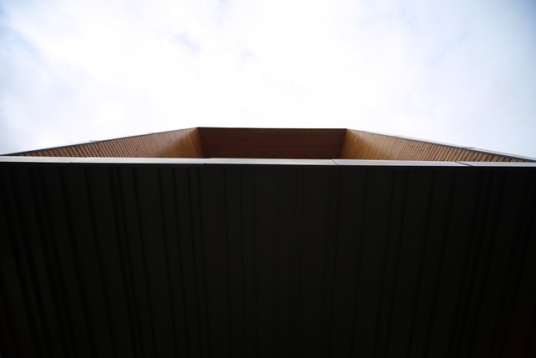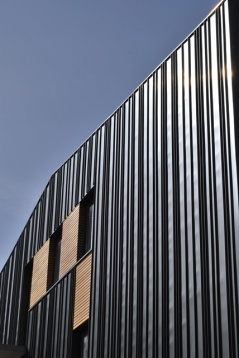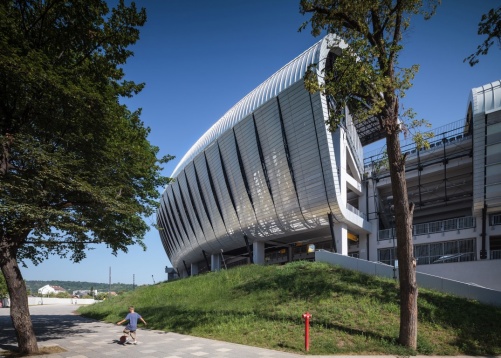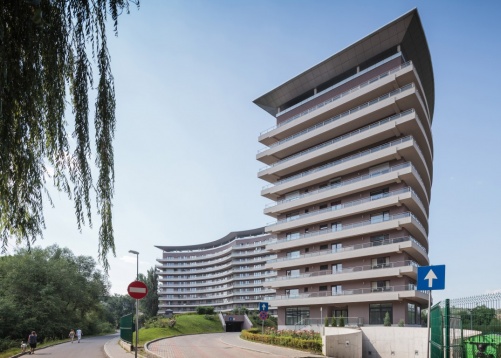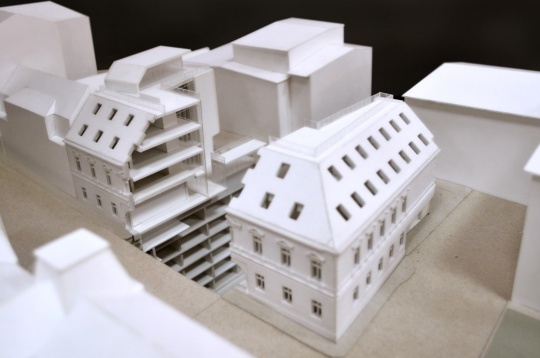HISTORY
Dico și Țigănaș is a prominent architectural & engeneering office based in Cluj-Napoca, Romania since 1997. The practice is led by its founders, engineer Florin Dico and architect Șerban Țigănaș.The first was a 1st year student, after previously finishing the Civil Engineering Faculty for over 10 years, and the latter was his professor at a workshop. The firm deals in creation of architectural, construction and installation designs for apartment buildings, office buildings, administrative buildings, stadiums and industrial buildings.
SPECIFIC
The business idea was simple, a single question came to mind: is the building design industry profitable in Romania, in the current conditions of that time, having no illegal workers, taking no commissions from material manufacturers, with 100% licensed software, decent salaries and all taxes paid; all that making quality designs and buildings. The team then grew from 2-4 members in 1997-1998 to 60 persons in 2007 and with a small decrease to 50 till now.
ROMANIAN DESIGN WEEK APPEARANCES
2018 // Click Factory
The proposed building has a volume that has been developed to accommodate a public parking and office spaces. The requirements of the two functions, as well as the town planning regulations for this area, were taken into account in relation to the alignment (continuous front), the existing wall, urbanistic indexes and accesses.
Architecturally, it took advantage of everything that the environment provided from the regeneration of the existing building, the use of glazed surfaces according to the sun orientation, to certified materials from responsible exploited sources, which offered the greatest advantages both from the point of view of the use of construction, material consumption and commissioning on site.
Dico și Țigănaș is a prominent architectural & engeneering office based in Cluj-Napoca, Romania since 1997. The practice is led by its founders, engineer Florin Dico and architect Șerban Țigănaș.The first was a 1st year student, after previously finishing the Civil Engineering Faculty for over 10 years, and the latter was his professor at a workshop. The firm deals in creation of architectural, construction and installation designs for apartment buildings, office buildings, administrative buildings, stadiums and industrial buildings.
SPECIFIC
The business idea was simple, a single question came to mind: is the building design industry profitable in Romania, in the current conditions of that time, having no illegal workers, taking no commissions from material manufacturers, with 100% licensed software, decent salaries and all taxes paid; all that making quality designs and buildings. The team then grew from 2-4 members in 1997-1998 to 60 persons in 2007 and with a small decrease to 50 till now.
ROMANIAN DESIGN WEEK APPEARANCES
2018 // Click Factory
The proposed building has a volume that has been developed to accommodate a public parking and office spaces. The requirements of the two functions, as well as the town planning regulations for this area, were taken into account in relation to the alignment (continuous front), the existing wall, urbanistic indexes and accesses.
Architecturally, it took advantage of everything that the environment provided from the regeneration of the existing building, the use of glazed surfaces according to the sun orientation, to certified materials from responsible exploited sources, which offered the greatest advantages both from the point of view of the use of construction, material consumption and commissioning on site.
2017 // Albini Office Building
A family of lawyers want to build a house on the ground floor instead, on the corner of a building with three levels for their offices. The challenge was to create a suitable building corner and proximity to all of the socialist multistorey housing in the immediate neighborhood. The language chosen is modernist - minimalist, composed finish, natural stone and noble carpentry, and economic treated areas. and noble carpentry, and economic treated areas.
2016 // C House
Near the sport and recreational airfield, the house looks towards the landscape- wood, metal, glass. Light, sight and even thoughts can pass through it from side to side, or can remain inside, at the inhabitant’s wish. The house is located on ground toward the garden and raised in console at the street and valley. Maybe it's the influence of gliders and light aircrafts overflying the site. In any case, it’s a form of taking possession of the land and an inner-outer precisely controlled dialogue.
2015 // Multifunctional Sports Hall
A family of lawyers want to build a house on the ground floor instead, on the corner of a building with three levels for their offices. The challenge was to create a suitable building corner and proximity to all of the socialist multistorey housing in the immediate neighborhood. The language chosen is modernist - minimalist, composed finish, natural stone and noble carpentry, and economic treated areas. and noble carpentry, and economic treated areas.
2016 // C House
Near the sport and recreational airfield, the house looks towards the landscape- wood, metal, glass. Light, sight and even thoughts can pass through it from side to side, or can remain inside, at the inhabitant’s wish. The house is located on ground toward the garden and raised in console at the street and valley. Maybe it's the influence of gliders and light aircrafts overflying the site. In any case, it’s a form of taking possession of the land and an inner-outer precisely controlled dialogue.
2015 // Multifunctional Sports Hall
Along the river Somes, in Cluj there are several sport facilities which came one after the other creating a green axis. The new sports hall was designed to be integrated into the recent development of the stadium. It is the companion of the stadium, belonging to the same generation and defining a complex for activities, very close to the city centre. It is meant to work as an extension with easy access for the activities in the central area and along the river, the generator of the city. The facade is multilayered. Outside it consists of a giant mesh parametrically generated, reminding of the net used for different games, which undulates when hit by a ball or at a goal.
The second layer, the actual enclosure, is partially translucent and partially transparent for direct sights carefully placed at key points. It is prepared for a new big lamp of the city, shining at show time. The arena is adaptable by removing structures for different scenarios for sports and concerts. The ultimate place to be conquered is a part of the roof terrace, prepared for a restaurant with fantastic views along the river, towards the city and, of course, to the stadium.
The second layer, the actual enclosure, is partially translucent and partially transparent for direct sights carefully placed at key points. It is prepared for a new big lamp of the city, shining at show time. The arena is adaptable by removing structures for different scenarios for sports and concerts. The ultimate place to be conquered is a part of the roof terrace, prepared for a restaurant with fantastic views along the river, towards the city and, of course, to the stadium.
2014 // Biasini Residence
The project have been tried for the first time by an association of several owners for a mixed and coherent development is in the central area situated on retroceded lands in the yard of former Biasini inn. The solution that is being built was negotiated with the heritage defenders so that the yard would gain an optimal proportion and the space would enclose around a square that becomes the social life center. The dynamic and articulation of volumes takes the cornice of the historical building and the overwrite with volumes that replicate the attic in a cotemporary language that allows a dialogue between the old and the new . From the upper stores one can discover targeted views towards the center church towers.
2014 // Public Parking
One of the big problems of infrastructure of every town for which Cluj has made several steps in the recent years is the public parking. Although several buildings were made for outdoor parking, the problem is far from being solved. They studied and proposed a network of three high-capacity automated underground parking that can store the entire amount of cars that park on the streets of the eastern center, freeing valuable public spaces for pedestrian purposes.
The system consists of fully underground parking with elevators that take and teach robotic vehicles at access points in a very short normal range. Ramps are not used, drivers to not enter the parking lot, the cars engines are off and there is no pollution, the energy consumed is electric and the vehicles are safe.
2014 // Public space redesign, Zalău
The project is based on a solution for a competition that planned to connect the central public spaces in Zalau in a coherent, unifying gesture. The proposed actions suggest emphasizing different characters of each element of the urban space and the dialogue between them both physically and visually.
The clear, contemporary design unifies and improves the overlapping historical elements, the already developed vegetation and the existing statuary. The geometry of the marble plateau is released and pronounced, the vegetal-pedestrian characteristic of Iuliu Maniu square is used for a better mobility, without sacrificing the present mature trees, and the pedestrian line flows directly into the square, defined by the Town Hall and the department store.
















